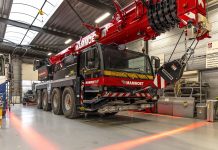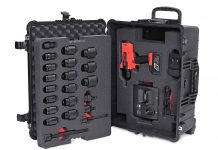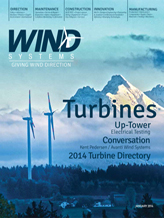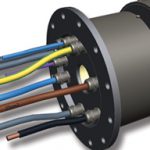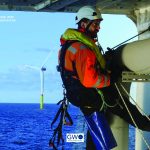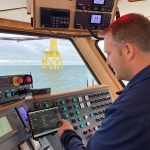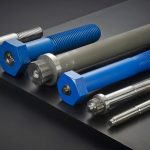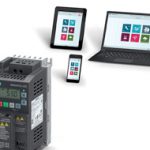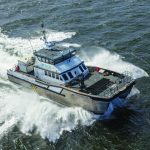Thermal imaging cameras are devices that can show you the differences in the amount of heat that is radiating off of a surface. The image shown on the screen of a thermal imaging camera typically shows the shape of the items that the camera is pointed at on the viewing screen in shades of colors. Usually hottest components are displayed in the brightest of colors. The color spectrum often displays white or bright yellow as the hot point, and the colors progressively become darker—from bright reds, to darker reds, to “cooler” colors such as dark blue or black—as the temperature of the displayed item decreases. A brighter, lighter color indicates a hotter temperature.
These cameras have become much more affordable in the past few years. Also, as is the case with regular point and shoot digital cameras, almost everyone can use a thermal imaging camera with some degree of success.
My first exposure (no pun intended) to thermal cameras was in the military when we were taught a class in which we were shown the difference between starlight scopes and thermal imaging scopes. Back then, this camera’s capability made it a very expensive technology that only the military and few others used.
That’s not the case today. Even bottom-dollar cameras can give you information that isn’t available with the naked eye. Every electrical maintenance team should have at least one thermal camera. It would be extremely improbable for a team to not find indications of at least one problem upon the first scan of a wind farm while using the device. Today’s thermal cameras are as simple as “point-and-shoot,” and many have “live” action screens that allow you to continually scan through components in an electrical panel. The camera will allow you to take snapshots or video with notes of items that are suspiciously hot or don’t seem right.
The best time to perform thermal scans with your thermal imaging camera is during high production periods. This is when your wind turbine equipment is working at its maximum. Scans of electrical connections, contactors, magnetic coils (such as those found on solenoids and main line contactors) will show you a world of items at different temperatures—through a world of different colors.
Other items to scan are reactive power supplying capacitors, control transformers, pumps, and cooling system components. You can scan pretty much anything. Taking a camera up tower with you will help you identify hot spots in controller cabinets, warm bearings, and hot and cool spots throughout the nacelle. Suspicious warm spots in faulty battery banks will show loose connections or bad batteries. You will find that unusually warm power electronic components or faulty cooling systems will show temperature differences. All of these thermal signatures will have a normal color pattern that you can become familiar with. When something is not of the norm, you can further troubleshoot to discover if there is a problem or not. The advantage of performing these scans is that you can stop and prevent a thermal failure of a component or electrical connection. As stated in the last maintenance article, electrical connections can loosen from thermal cycling and/or vibrations, contactors can wear, relay coils fail, and with this thermal imaging device, you may find signs of these impending failures before they happen. This allows you to take what you learned from the thermal imaging scan and replace or repair before a surprise failure.
There are experts who specialize in thermal imagery. Even so, nearly anyone can use a thermal imaging camera, but only those trained to work in the wind turbine—specifically those trained to work within the electrical control panels—should have access to do so. Arc flash dangers are always present and opening any panels with live electricity behind them is a serious, and potentially dangerous, if not deadly action.
There is a way to make the thermal imaging scans of electrical systems safer for everyone. This method will even allow those who are not electrically astute to perform these scans of electrical components safely. The method includes the installation of visual ports called infrared windows (IR Windows) to scan electrical components. Basically, these are windows that are inserted into panel doors that allow you to thermally scan hazardous electrical components without exposing the inspection technician to the dangers associated with live components (electrical shock, arc flash, and arc blast). The IR window is designed to resist failure during an arc flash. During non-inspection times, it has a protective shutter installed. If these devices are installed on electrical component doors and panels, the technician can remove the shutter on an IR window and perform a quick thermal scan any time he enters a tower, or is near a pad mount transformer. This allows you to make a thermal imaging scans a regular and common practice. You will gain regular insight to the potential problems of loose connections or soon-to-fail equipment. This alone is worth the cost of the installation of these windows. Imagine the value of the added safety of preventing your people from being exposed to potentially dangerous arc flash situations. Typically these windows are placed so that you can scan through the window over most precious or volatile important connections and components—power electronic devices, electrical buss bar connections, power connections, or any other areas that make sense to be able to monitor anytime you pass by with your camera. Adding the IR Windows is the wise and safe way to help collect thermal data without exposure to additional risk. You will be collecting data for the life of the wind farm. Work as safe as possible and prevent surprises.
















